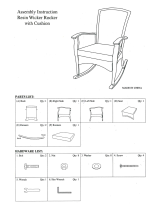
7.8.1 Fuel filter – Replacement 92
7.8.2 Fuel prefilter – Differential pressure check and
adjustment of gauge 94
7.8.3 Fuel prefilter – Draining 95
7.8.4 Fuel prefilter ‒ Flushing 96
7.8.5 Fuel prefilter – Filter element replacement 98
7.9 Charge-Air Cooling 100
7.9.1 Intercooler – Checking condensate drain line
for coolant discharge and obstruction 100
7.10 Air Filter 101
7.10.1 Air filter – Replacement 101
7.10.2 Air filter – Removal and installation 102
7.11 Air Intake 103
7.11.1 Contamination indicator – Signal ring position
check (optional) 103
7.12 Starting Equipment 104
7.12.1 Starter – Condition check 104
7.13 Lube Oil System, Lube Oil Circuit 105
7.13.1 Engine oil – Level check 105
7.13.2 Engine oil – Change 106
7.14 Oil Filtration / Cooling 107
7.14.1 Engine oil filter – Replacement 107
7.14.2 Centrifugal oil filter – Cleaning and filter-
sleeve replacement 109
7.15 Coolant Circuit, General, High-
Temperature Circuit 112
7.15.1 Drain and venting points 112
7.15.2 Engine coolant – Level check 117
7.15.3 Engine coolant – Change 118
7.15.4 Engine coolant – Draining 119
7.15.5 Engine coolant – Filling 120
7.15.6 HT coolant pump — Relief bore check 121
7.15.7 Engine coolant – Sample extraction and
analysis 122
7.15.8 Coolant filter – Replacement 123
7.16 Raw Water Pump with Connections 124
7.16.1 Raw water pump – Relief bore check 124
7.17 Belt Drive 125
7.17.1 Drive belt – Condition check 125
7.18 Battery-Charging Generator 126
7.18.1 Battery-charging generator drive – Drive belt
replacement 126
7.19 Fuel Supply System 127
7.19.1 Water drain valve – Check 127
7.19.2 Differential pressure gauge – Check 128
7.19.3 Water level probe (3-in-1 rod electrode) –
Check 129
7.19.4 Pump capacity – Check 130
7.19.5 Coalescer filter element – Replacement 131
7.20 Wiring (General) for Engine/Gearbox/Unit 133
7.20.1 Engine wiring – Check 133
7.21 Accessories for (Electronic) Engine
Governor / Control System 134
7.21.1 Engine governor and connectors – Cleaning 134
7.21.2 Engine governor – Checking plug-in
connections 135
7.21.3 EMU – Checking plug-in connections 136
7.21.4 Engine governor – Carry out self-test 137
7.21.5 EMU and connectors – Cleaning 138
7.21.6 ECU 7 engine governor – Removal and
installation 139
7.21.7 Engine monitoring unit – Removal and
installation 140
8 Appendix A
8.1 Abbreviations 141
8.2 MTU contact persons/service partners 144
9 Appendix B
9.1 Special Tools 145
9.2 Consumables 152
9.3 Spare Parts 154
9.4 Index 156
4 | Table of Contents | MS150061/04E 2012-07
DCL-ID: 0000010704 - 004




















